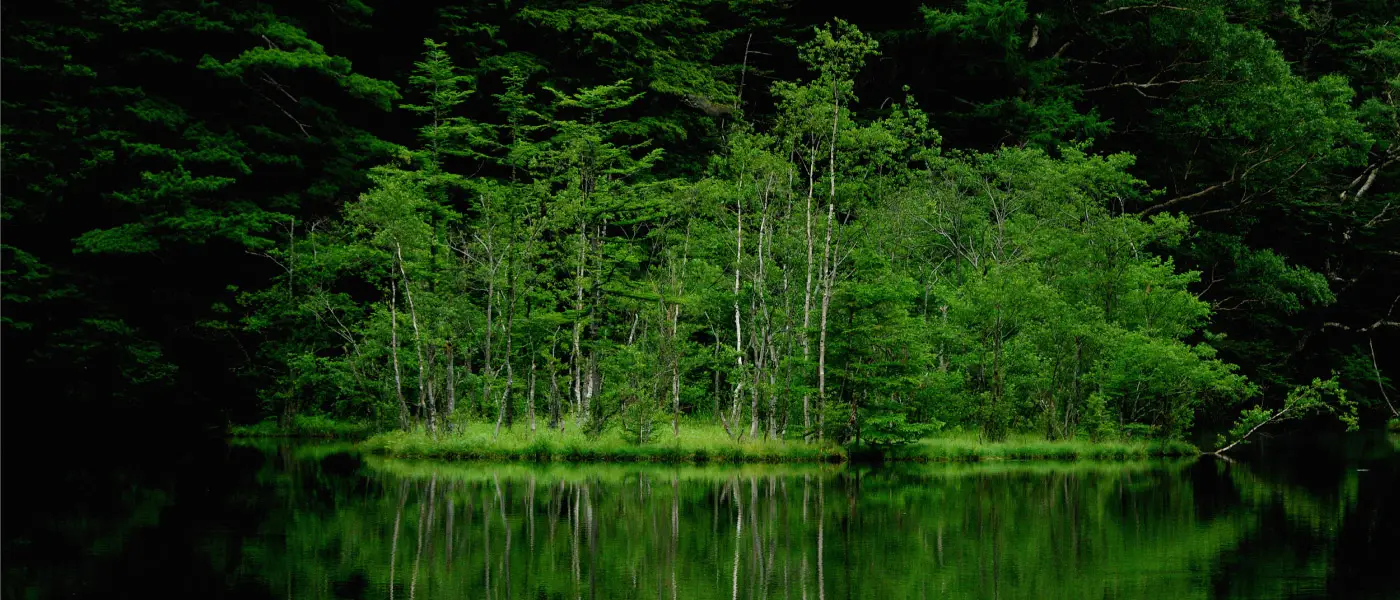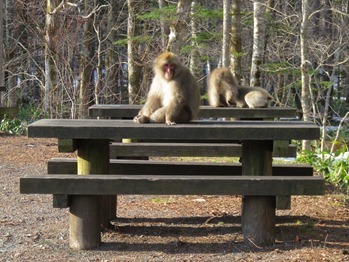
Here at last is the final installment of our popular "Beginner's Guide to the Northern Alps." Having covered the broad topic of safety in the Part IV, we now move on to the rules and guidelines created to help everybody enjoy the mountains in a responsible fashion. While it may sound a bit self-serious, the goal here is to make the most of your time in the Chubu Sangaku National Park without taking away from anyone else, human and animal alike.
Part V: Rules and Etiquette
The Basics
Forgoing the better know paradigm of Ten Commandments, Kamikochi has five rules:
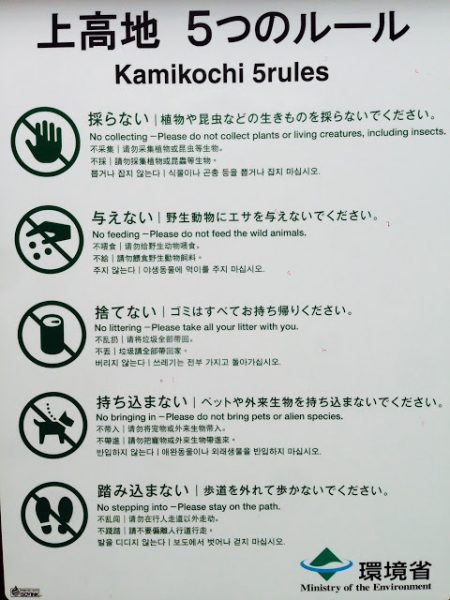
No "alien species" eh? You drive a hard bargain, Kamikochi.
So, in short:
- Don't remove any plants or animals from the park.
- Don't feed any animals.
- No littering!
- Don't bring in plants or animals from outside the park.
- No trampling plants etc. by straying from the path.
For most of us, these the reasoning behind these rules should be obvious. National parks are designated as protected areas and all of the behaviors listed above damage or otherwise interfere with the environment. It's been more than forty years since private cars were banned from entering the park and now we can't imagine it being any other way.
While the rules listed above are specific to Kamikochi, they also reflect appropriate conduct for national parks in general. We ask you to maintain the same respect for the natural environment throughout the Northern Alps as well as at national parks around Japan.
Mountain Huts and Camping Areas
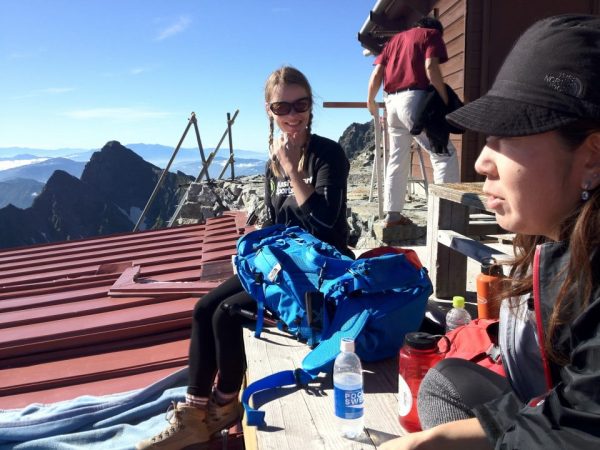
Brunch above the clouds. Hikers stop for food, drink, and rest at Japan's highest manned hut: Kitahotaka-goya.
For long term hikers, there's a common sense regarding the topic of mountain huts and how to use them. Though you can find both manned (commercial) and unmanned huts, the ones we'll be talking about here are the former.
"Yamagoya" is the catch-all term for mountain huts and establishments like these will usually have a suffix like -goya, koya, sansou, or hyutte. Yamagoya are found in and around the mountains and offer both food and bedding, the latter in the form of a futon in a tatami room (often a dormitory style common room).
Yamagoya at lower elevations will sometimes have baths or showers as well as the luxury of flushed toilets. Others, especially higher up, will sometimes have none of these things. One staple of yamagoya is the provision of water, a non-negotiable element of any excursion. Typically, the front desk will sell snacks other sundries, but because all such supplies must be either helicoptered or winched up to them, they charge inflated prices. The same goes for the beer which will run you 500 yen a can (worth it!).
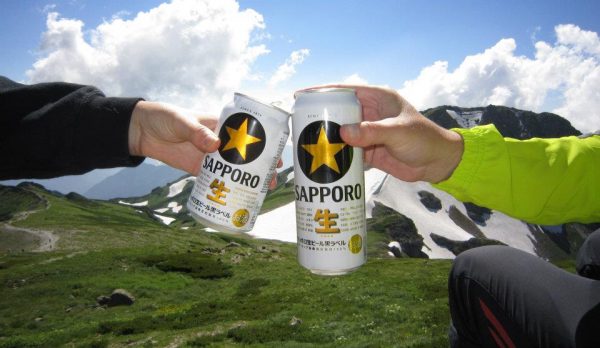
Beer? I'll buy that for a dollar! Errr...500-800yen... (photo: Tammy Akahane)
If you don't feel like bumbling your way through the whole process, there is an exhaustive guide to staying at yamagoya in this English language article on Yamakei.
As for the bare basics:
- In the Northern Alps, there is an unwritten rule that no one who shows up at a mountain hut is denied lodging. In other words, reservations are generally not necessary. (UPDATE: Since the start of the COVID-19 pandemic in 2020, mountain huts now generally require prospective guests to contact the hut ahead of time.)
- HOWEVER, calling ahead to inform them of your intention to stay, how many are in your party, and whether you require meals is a welcome courtesy and always a good idea.
- Get there early. Aim to arrive at the hut by 3pm. Showing up after 4pm is poor etiquette and after dark all but unheard of.
- Bring cash. Many of these places don't take credit cards.
- Get to bed early and prepare for an early start. The norm is mountain huts is to be up be 4am to get dressed, watch the sunrise, and eat breakfast before heading out.
- Go with the flow. If you're not sure how to do something look at what others are doing and follow their lead. It's not rocket science.
In addition to the services and amenities provided inside mountain huts, there are also services that you can use around them. Campers can almost always set up tents in the surrounding area for a modest fee. Some huts offer tent rentals for a much higher fee. There will be tables outside the hut where you can set up portable cooking gear to make your own food and you can use their outdoor toilets--though you will likely be asked to throw 100yen in the tip box.
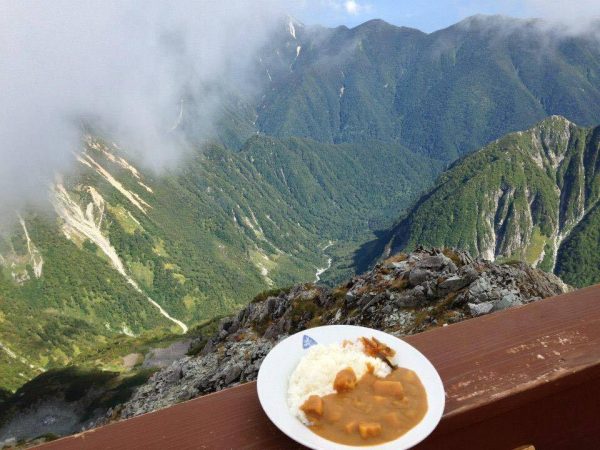
Tasty curry atop Kitadake. (photo: Tammy Akahane)
Trail Etiquette:
Japan has its own hiking culture, aspects of which might be familiar to visitors from abroad. There's a good article on the subject here.
To touch on a few key points:
- When descending, yield to hikers going up the trail, unless they insist you go first. Also, if someone is coming up from behind you a a much brisker pace, they'll appreciate you standing aside to let them pass.
- Greet other hikers. Konnichiwa!, and Ganbatte! ("Press on!") are both popular greetings when passing other hikers. If you pass a descending hiker you says "mada mada" ("You're a long way from the goal"), you may just be dealing with a wisenheimer...
- Don't block the trails. When stopping for a rest, do your best not to obstruct others.
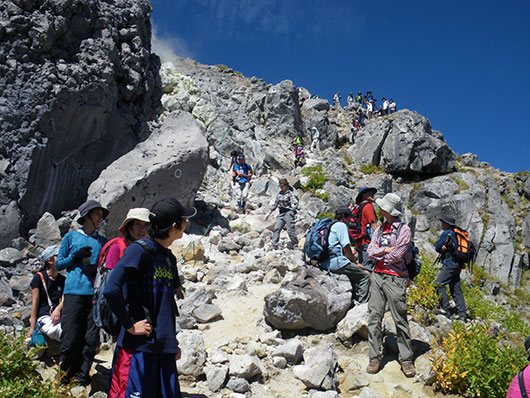
Respect your fellow hikers as you head for higher ground.
Winter...
We get a lot of inquiries about visiting Kamikochi in the off-season, and while that topic is too big to cover in this piece you can read all about it in this classic blog post from a few years back.
And with that, we conclude the fifth and final installment in our beginner's guide. We hope it proves useful to anyone just getting acquainted with the Northern Japan Alps and that the many links contained herein supply you with some more specialized info. Discovering Japan's mightiest mountain chain--sorry Minami, you're a close second--is a great adventure and one you'll want to approach with a bit of knowledge on your side.
Sources of Information:
Yamakei Online website: https://hikesinjapan.yamakei-online.com/information/g.php
Kamikochi Matsumoto City blogspot: http://m-kamikouchi.blogspot.com/2016/08/blog-post_57.html
Tozan TV website: https://en.tozan.tv/7-trail-etiquette-when-hiking-in-japan/



